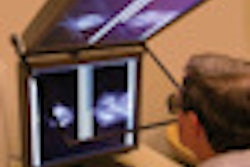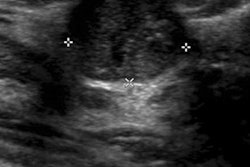Dr. Bianca Carpentier and colleagues reviewed 121,862 mammograms interpreted between February 2002 and May 2009 by 12 radiologists. Of all the mammograms, 7% or 8,403 were classified as BI-RADS 3; over a two-year follow-up period, 0.4% (32 of 8,403) of these were reclassified to BI-RADS 4 or 5.
All the lesions that were upgraded to BI-RADS 4 or 5 showed cancer on subsequent biopsies. Although 11 (34%) of them did not show any change in size or morphology, they were upgraded to BI-RADS 4 or 5 by a subsequent and different radiologist. None of these 11 initial BI-RADS 3 lesions were upgraded if the same radiologist interpreted the subsequent mammogram, Carpentier's group found, and most of the changes in classification occurred at the first six-month follow-up exam.
Because more than a third of the lesions upgraded from BI-RADS 3 to BI-RADS 4 or 5 were reclassified due to reader interpretation, a second reader should review BI-RADS 3 lesions at the time of the initial diagnostic workup to reduce the possibility of a delayed cancer diagnosis, the researchers suggested.



















